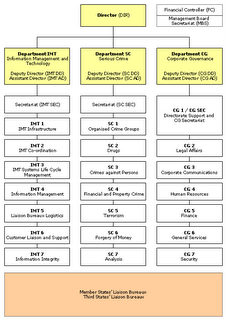
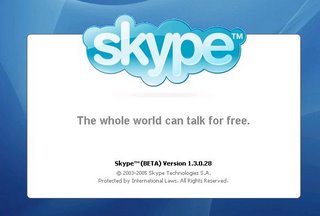

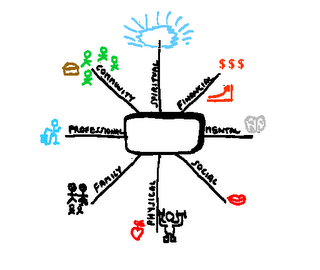

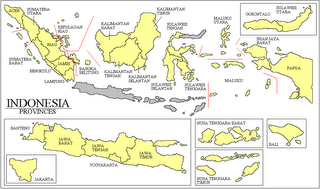
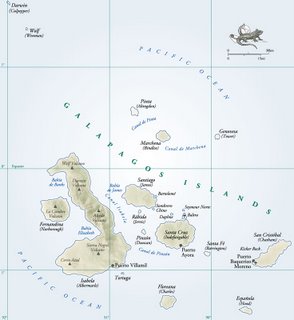
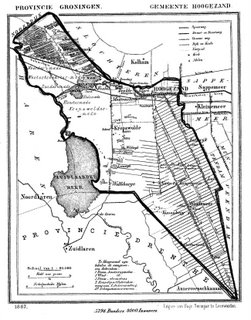

Paula Abagnale: Just tell me how much he owes and I'll pay you back.
Carl Hanratty: So far, it's about 1.3 million dollars.
~ Catch me if you Can
Your Christmas Song Is |
 Joy to the World Joy to the world, the Lord is come! Let earth receive her King; Let every heart prepare Him room, And heaven and nature sing, It's not about what you get under the tree But sharing love with family, friends, and strangers |


20 comments:
"
Europol is the European Law Enforcement Organisation which aims at improving the effectiveness and co-operation of the competent authorities in the Member States in preventing and combating terrorism, unlawful drug trafficking and other serious forms of international organised crime.
"
..." I approach my job hunting strategy pretty much like I approach my work. I took some time to think about the skills I want to use on my next job, the industry I’d like to work for and the location I want. I did some research on companies that were advertising and knew this company had the qualities I am looking for in my career and future."
...By emphasizing specific examples of knowledge-based skills learned through education and experience, transferable skills, and personal traits, you reveal a summary or snapshot of yourself.
"..."
" Wat zijn de primaire verantwoordelijkheden binnen de functie?
Aan wie rapporteer ik?
Wat voor studiefaciliteiten zijn er?
Wat voor mogelijkheden voor cursussen bestaan er?
Welke doorgroeimogelijkheden zijn er?
Hoeveel andere mensen zullen er aan het project /op de afdeling werken?
Waarom is de baan vacant gekomen?
Wat is de cultuur van het bedrijf?
Welke plannen heeft de organisatie voor toekomstige ontwikkelingen? "
"...However, picture thinkers and word thinkers may have difficulty working together..."
"Mind Maps™, developed by Tony Buzan are an effective method of note-taking and useful for the generation of ideas by associations. To make a mind map, one starts in the center of the page with the main idea, and works outward in all directions, producing a growing and organized structure composed of key words and key images. Key features are:
Organization
Key Words
Association
Clustering
Visual Memory - Print the key words, use color, symbols, icons, 3D-effects,arrows and outlining groups of words
Outstandingness - every Mind Map needs a unique center
Conscious involvement "
"ABSTRACT
Defocus/withdraw from details/generalise
Look at the big picture/seek overall pattern
Induce principles from particulars
Think with broad brush
Group/classify/symbolise
Diagram/chart/schematide
Analyse/repattern
Expand viewpoint/think divergently
View problem as part of a system/see problem's context
Refer to:
10-2/grouping
10-4/focus
10-5/da Vinci's device
2-4/categorising
2-14/visual induction I
Imagine
14-4/phosphene projections
18-4/abstract word-images
18-5/synectics excursion
Draw
10-1/fingerpaint patterns
21-2/pattern language
Table of contents
Background
Thinking by Visual Images
Images in Action
Ambidextrous Thinking
Learning to Think Visually
Preparation
Tools
Materials
External Environmental Conditions
Internal Relaxed Attention
Seeing
Externalised Thinking
Recentering
Seeing by drawing
Pattern-seeking
Analytical Seeing
Proportion
Cues to form and space
Imagining
The mind's eye
Visual Recall
Autonomous Imagery
Directed Fantasy
Structures and Abstractions
Foresight and Insight
Idea-sketching
Express/Test/Cycle
Out of the Language Rut
The strategy approach
"
"Random Input
Problem Reversal
Ask Questions
Applied Imagination - Question Summary
Lateral Thinking
Six Thinking Hats
The Discontinuity Principle
Checklists
Brainstorming
Forced Relationships/Analogy
Attribute Listing
Morphological Analysis
Imitation
Mindmapping
Storyboarding
Synectics
Metaphorical thinking
Lotus Blossum Technique
In the realm of the senses
Use of drawing (from Robert McKim's Experiences in Visual Thinking
IdeaToons (by Michael Michalko)
NLP (Neuro-Linguistic Programming) Techniques
Assumption Smashing
DO IT! method of Roger Olsen
LARC Method
Unconscious Problem Solving
Simplex - a "complete" process with three stages (finding problems,solving problems, implementing solutions) and eight discrete steps represented as a wheel to reflect the circular, perennial nature of problem solving. The full name is the Basadur Simplex process. Its eight steps include: problem finding, fact finding, problem defining, idea finding, evaluating and selecting, action planning, gaining acceptance, and taking action. The t
The TRIZ method of Semyon D. Savransky
Fuzzy Thinking
Some further examples of creativity techniques and guidelines linked with historical examples.
Breakthrough Thinking - The seven steps of uniqueness, purpose, solution after next, systems, needed information collection, people design, and betterment timeline.
"
... "SUBTRACT
Remove certain parts or elements
Compress or make it smaller
What can be reduced or disposed of?
What rules can you break?
How to simplify?
How to abstract, stylise or abbreviate?
ADD
Extend or expand
Develop your reference subject
Augment, advance or annex it
Magnify, make it bigger
What else can be added to your idea, image, object, material?
TRANSFER
Move subject into a new situation
Adapt, transpose, relocate, dislocate
Adapt subject to a different frame of reference
Move subject out of its normal environment
Transpose to a different historical, social, geographical setting
Adapt a bird wing model to design a bridge
How subject can be converted, translated, transfigured?
EMPATHIZE
Sympathize with subject
Put yourself in its shoes
What if subject has human qualities?
Relate to subject emotionally, subjectively
ANIMATE
Mobilize the visual and psychological tensions
Control the pictorial movements and forces
Apply factors of repetition and progression
What human qualities subject has?
SUPERIMPOSE
Overlap, place over, cover, overlay
Superimpose dissimilar images or ideas
Overlay elements to produce new images, ideas, meanings
Superimpose elements from different perspectives, disciplines, time
Combine sensory perceptions such as sound and color
Superimpose several views to show different moments in time
CHANGE SCALE
Make subject bigger or smaller
Change time scale - seconds, minutes, hours, days, weeks, months, years
Change proportion, relative size, ratios, dimensions
SUBSTITUTE
Exchange, switch or replace
What other idea, image, or material can you substitute?
What alternate or supplementary plan can be employed?
FRAGMENTATE
Separate, divide, split, dissect
Take your subject or idea apart
Chop up, disassemble it
What devices can divide it into smaller increments?
How to make it appear discontinuous?
ISOLATE
Separate, set apart, crop, detach
Take only part of your subject
"Crop" your ideas with a "mental" viewfinder
What element can you detach or focus on?
DISTORT
Twist subject out of its true shape, proportion or meaning
Make imagined or actual distortions
Misshape it, yet produce unique metaphoric/aesthetic quality
Make it longer, wider, fatter, narrower
Melt, crush, bury, crack, tear, torture, spill something on it
DISGUISE
Camouflage, conceal, deceive, encrypt
Hide, mask, "implant" subject into another frame of reference
Conceal by mimicry, like chameleons and moths
Create a latent image that communicate subconsciously
CONTRADICT
Contradict the subject's original function
Contradict visually and intellectually, yet remain structurally integrated
Contradict laws of nature such as gravity, time, human functions
Contradict normal procedures, social conventions, rituals
Contradict optical and perceptual harmony (eg. illusions)
Deny, reverse
PARODY
Ridicule, mimic, mock, burlesque or caricature
Make fun of your subject, roast it
Transform it into a joke, limerick or pun
Make zany, ludicrous or comic references
Make a humourous cartoon drawing of the problem
PREVARICATE
Fictionalise, "bend" the truth, falsify, fantasize
Use subject as a theme to present ersatz information
Interprete information differently to mislead or confuse
ANALOGIZE
Draw associations
Seek similarities between things that are different
Compare with elements from different domains, disciplines
What can I compare my subject to?
Make logical or illogical associations
HYBRIDIZE
Cross-fertilise - wed subject with an improbable mate
What would you get if you crossed a _____ with a ______?
Cross-fertilise color, form and structure
Cross-fertilise organic and inorganic elements
Cross-fertilise ideas and perceptions
METAMORPHOSE
Transform, convert, transmutate
Depict your subject in a state of change
Change color, configuration
Make structural progressions
Make aging (cocoon-to-butterfly) transformation
Make "Jekyll and Hyde" transmutations
SYMBOLIZE
A visual symbol stands for something other than what it is
Design an icon for your idea
How can your subject be imbued with symbolic qualities?
Public symbols are cliche, well-known and understood
Private symbols are cryptic, have special meaning to its originator
Works of art are often integrations of both public and private symbols
Turn your subject into a symbol (public or private)
MYTHOLOGIZE
Build a myth around your subject
Transform your subject into an iconic object
FANTASIZE
Fantasize your subject
Trigger surreal, preposterous, outlandish, bizarre thoughts
Topple mental and sensory expectations
How far out can you extend your imagination?
What if automobiles were made of bricks?
What if alligators played pool?
What if insects grew larger than humans?
What if night and day occurred simultaneously?
REPEAT
Repeat a shape, color, form, image, or idea
Reiterate, echo, restate or duplicate your reference subject in some way
Control the factors of occurrence, repercussion, sequence and progression
COMBINE
Bring things together
Connect, arrange, link, unify, mix, merge, rearrange
Combine ideas, materials and techniques
Bring together dissimilar things to produce synergistic integrations
What else can you connect to your subject?
Connect different sensory modes, frames of reference, disciplines
"
"SUBTRACT ADD TRANSFER EMPATHIZE ANIMATE
SUPERIMPOSE CHANGE SCALE SUBSTITUTE FRAGMENTATE
ISOLATE DISTORT DISGUISE CONTRADICT
PARODY PREVARICATE ANALOGIZE HYBRIDIZE
METAMORPHOSE SYMBOLIZE MYTHOLOGIZE FANTASIZE
REPEAT COMBINE "
"een sterke theoretische ondergrond;
training in modeldenken;
stimulering van eigen kennisverwerving en kritische reflectie;
kennis en onderzoeksvaardigheden als basis voor fundamenteel en toegepast onderzoek; dit vanuit het perspectief van kennisverwerving en vanuit de overweging dat het doen van onderzoek een uitstekende training is om sociale processen te analyseren en sociale problemen op te lossen;
integratie van theoretische kennis en praktische vaardigheden; dit vanuit het inzicht dat praktische vaardigheden (bijv. onderhandelen) gestuurd moeten worden door theoretische inzichten hierover, en andersom.
"
"
Job Seekers
Job Search
Manpower Professional Difference
Advantages
Career Development Tools
Researching for the Perfect Job
Research Your Prospective Employer
Training - Expand Your Skills
Resume Preparation
Resume Formats
Reference Tips
Writing Letters
Networking
Interviews
Interviews: Before, During and After
Behavioral Interviewing
Types of Questions
Asking Questions
Closing an Interview
Dos and Don'ts
Salary Negotiation
Counteroffers
Resignation Process
Employers
About Us
Office Locator
Engineering
Finance
Information Technology
Scientific
Other Professions
Page Tools
Print page
Interviews
Printer Friendly
Types of Questions
There are two types of interview questions, Traditional and Behavioral. Traditional questions spark solid answers that focus on your candidacy for the position, motivations or work history. The theory behind Behavioral questions is that past behavior can predict future behavior. Be prepared with solid, detailed examples of instances in which you encountered the topic situation.
We've provided these sample questions for your reference.
Traditional
What can you tell me about yourself?
What are your most significant accomplishments?
How would you describe your ideal position?
What can you contribute?
What's the biggest mistake you've made in your career?
Why are you interested in this position?
Why should we hire you?
Why did you leave your last position?
What will references say about you?
What are your strengths? Weaknesses?
Behavioral Questions
Share a time in which you were very persistent in order to reach a goal.
Tell me about a time when you had to provide service to a stubborn, arrogant customer.
Give me an example of a time when you failed to meet a specific deadline. Why did you fail? How would you do it differently?
Can you describe a high-stress situation in which it was desirable for you to keep a positive attitude?
Give me an example of a time when you used facts and reason to persuade another person to take action.
Tell me about a time when you strongly disagreed with your supervisor. What was the basis of the disagreement?
Describe a situation in which you had to draw a conclusion quickly and take speedy action.
When have you found it useful to use detailed checklists/procedures to reduce potential for error on the job? Be specific.
What idea have you developed and implemented that was creative or innovative?
Describe a situation in which you had to adjust quickly to changes in the organizational goals. How did these changes have an impact on you? Give an example.
"
"Studentikoos... Werkeloos..."
MSN...
"- minute taking for operational and first officers meeting IMT1
- dissemination of post IMT1
- processing holiday request and sickness IMT1
- processing travel request and claims IMT1
- processing stand-by duty claims IMT1
- arranging meeting IMT1
- secretariat support for HoU IMT1
- secretarial support for IMT1 Unit
"
"Europol (Officiële naam: European Police Office) is een multinationale onderzoeksorganisatie en het samenwerkingsverband van de politiedienten van de Europese Unie. De oprichting van de organisatie werd vastgelegd in het Verdrag van Maastricht (1992) maar voor de feitelijke oprichting is een apart verdrag tussen de lidstaten tot stand gekomen. Europol is volledig operationeel sinds 1 juli 1999. Het hoofdkwartier van de dienst is gevestigd in Den Haag, Nederland.
Europol organiseert de informatieuitwisseling tussen de politiediensten van de 25 lidstaten van de Europese Unie. De laatste lidstaat, Estland, is op 1 juli 2005 tot het Europol verdrag toegetreden. De lidstaten én Bulgarije, Noorwegen en Roemenië (welke niet lid zijn van de Europese Unie) hebben ten behoeve van de informatieuitwisselingen één of meerdere liaisons bij Europol geplaatst.
[bewerk]
Functies
Europol was al vóór 1999 in functie, als Europol Drugs Unit (EDU). Deze "unit" was actief sinds 3 januari 1994 en werd naderhand door de hoofdorganisatie vervangen.
Het doel van Europol is om de effectiviteit en samenwerking tussen de autoriteiten van de lidstaten te versterken, om zo zware internationale misdaad te bestrijden.
Europol heeft geen uitvoerende macht. Het is een ondersteunende dienst voor de ordehandhavingsdiensten van de EU-lidstaten. Dit betekent dat Europol niets te zeggen heeft in onderzoeken of het arresteren van verdachten. Europol kan wel informatie uitwisselen en analyseren. Daarvoor heeft elke lidstaat onder andere een of meerdere liaisons bij Europol gestationneerd en een Europol National Unit (ENU) in eigen land opgericht vanwaaruit de contacten tussen Europol en de nationale politiediensten plaatsvinden. De Nederlandse ENU is georganiseeerd binnen de Dienst Internationale Politiesamenwerking van het KLPD.
[bewerk]
Autoriteit
De directeur van Europol wordt aangewezen door de Raad van de Europese Unie. De Duitse Max-Peter Ratzel is sinds februari 2005 directeur van Europol. Hij wordt in deze functie bijgestaan door de Spaanse Mariano Simancas, de Deen Jens Højberg en Kevin O'Connell uit het Verenigd Koninkrijk.
"
Brussels...
<<< <<<
<<< <<< Magelang...
"G.M..." >>> >>>
Post a Comment